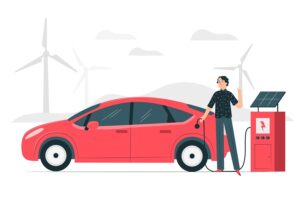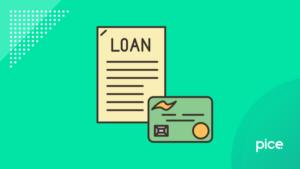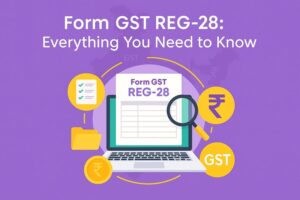Return of Expired Medicines Under GST
- 31 Aug 24
- 15 mins
Return of Expired Medicines Under GST
Key Takeaways
- GST rates on medicines vary from NIL to 28%, impacting pricing and tax liability for pharmaceutical products.
- The return of expired medicines under GST requires careful documentation and tax adjustments through credit notes.
- Proper handling of tax invoices, delivery challans, and credit notes is essential for compliance when returning expired medicines.
- Time limitations for issuing credit notes and adjusting tax liabilities must be strictly followed to avoid financial penalties.
- Destroying expired medicines requires reversing input tax credits and maintaining accurate records for GST compliance.
GST Rates for Medicines and Pharmaceuticals
The GST rates on medicines and pharmaceutical products vary based on the type of product and its usage. The rates are categorized into different slabs to ensure appropriate taxation across the healthcare sector. These rates are crucial for pharmaceutical companies, medicine retailers, and healthcare providers to determine their pricing strategies and manage their tax liabilities effectively. The rates also influence the final cost to consumers, impacting the overall affordability of medicines in India.
Pharmaceutical products fall under different GST rates, including NIL, 5%, 12%, 18%, and 28%. Each category has specific types of medicines or medical products that it covers, ensuring a structured approach to taxation in the pharmaceutical sector. The categorization also takes into account the essential nature of certain medicines, offering lower rates for life-saving drugs and higher rates for non-essential or luxury healthcare products. Understanding these rates is vital for registered persons in the pharmaceutical supply chain to comply with GST regulations and make informed decisions regarding the supply of medicines.
💡 If you want to pay your GST with Credit Card, then download Pice Business Payment App. Pice is the one stop app for all paying all your business expenses.
NIL GST Rate on Medicines and Medical Products
Medicines and medical products that fall under the NIL GST rate are exempt from any GST. These typically include essential life-saving drugs, certain vaccines, and specific medical equipment that are crucial for public health. The NIL rate is designed to keep these essential products affordable and accessible to all, ensuring that the healthcare needs of the population are met without the burden of additional taxes. Pharmaceutical companies and medicine retailers dealing with these products benefit from simplified tax compliance, as there is no need to charge or remit GST on these items.
The NIL GST rate also applies to certain medical products used in public health initiatives, ensuring that government efforts to combat widespread diseases are not hampered by taxation issues. This exemption supports the overall health sector by reducing the cost burden on essential medical supplies. However, businesses must still maintain accurate records, including tax invoices and delivery challans, to document the supply of these exempt products. Understanding the application of the NIL GST rate is essential for companies involved in the manufacture, distribution, and sale of these critical healthcare items.
5% GST Rate on Medicines and Medical Products
The 5% GST rate applies to a broad range of medicines and medical products, often including essential drugs that are not exempt but still considered vital for healthcare. This rate is intended to balance the need for government revenue with the need to keep essential healthcare products affordable. For instance, some pharmaceutical products used for chronic conditions, certain medical devices, and basic healthcare products fall under this category.
Pharmaceutical companies must issue a fresh invoice for these products, ensuring that the tax liability is calculated correctly. The application of the 5% rate is significant for both the supply chain and the end consumer, as it affects the pricing strategy of pharmaceutical companies and the overall cost of healthcare. It also impacts the Input Tax Credit mechanism, where companies can claim credit for the taxes paid on inputs used in manufacturing these products. The 5% GST rate is critical for maintaining a balance between affordability for consumers and revenue generation for the government.
12% GST Rate on Medicines and Medical Products
The 12% GST rate generally applies to non-essential but commonly used medicines and medical products. These may include certain over-the-counter drugs, vitamins, and dietary supplements that are widely used but not classified as essential or life-saving. The 12% rate reflects the government's approach to moderately tax products that are important but not critical to public health.
For businesses, this rate requires careful management of their tax liability, as it directly impacts the cost structure and pricing of these products. Pharmaceutical companies must accurately calculate and remit GST on these products, ensuring compliance with GST laws. The 12% rate also influences the return supply of expired medicines, where businesses must manage credit notes and tax adjustments effectively. Proper documentation, including tax invoices and delivery challans, is essential for businesses to navigate the complexities of GST at this rate.
18% GST Rate on Medicines and Medical Products
The 18% GST rate is typically applied to non-essential, higher-end pharmaceutical products and medical devices. This category includes certain cosmetic products, luxury healthcare items, and advanced medical equipment that are not considered critical for basic healthcare but are still an important part of the healthcare industry. The higher rate reflects the non-essential nature of these products, making them a source of revenue for the government while still being accessible to those who can afford them.
For pharmaceutical companies and healthcare providers, managing products under the 18% GST rate involves significant compliance responsibilities. This includes issuing accurate tax invoices, managing input tax credits, and ensuring proper tax liability adjustments when dealing with the return of time expired products. The 18% rate also impacts the pricing strategy and market positioning of these products, as businesses must consider the added tax when determining their final prices to consumers.
28% GST Rate on Medicines and Medical Products
The 28% GST rate is applied to luxury or non-essential healthcare products that are considered beyond the basic needs of the population. This rate is typically reserved for items such as high-end cosmetic surgery products, certain wellness supplements, and other luxury medical devices that cater to a niche market. The 28% rate is the highest GST slab, reflecting the government's intent to tax luxury goods at a higher rate.
Pharmaceutical companies dealing with products under this rate need to manage their tax liability carefully, as the high tax rate can significantly impact the pricing and demand for these products. Businesses must ensure compliance with GST regulations, including the correct issuance of tax invoices, management of credit notes, and handling the reversal of credit in cases of return supply. The 28% GST rate requires businesses to be vigilant in their tax management practices to avoid any potential legal issues.
Understanding the Return of Expired Medicines under GST
The return of expired medicines under GST involves several compliance and procedural steps that businesses must follow to adjust their tax liabilities correctly. When medicines expire, they are no longer fit for sale or consumption and must be returned to the supplier or destroyed. The return of these time-expired products impacts the tax liability of the registered person, requiring adjustments to be made through credit notes or reversal of input tax credits.
In GST, the return of expired medicines is treated differently from fresh supply, as the goods are no longer part of the taxable supply chain. This return process must be properly documented to ensure that the tax burden is accurately adjusted. Businesses must issue a credit note in relation to the expired goods, which allows them to adjust the GST liability that was initially charged on the sale of these products. This adjustment is critical to maintaining accurate tax records and ensuring compliance with GST regulations.
For the pharmaceutical sector, managing the return of expired medicines is a routine part of operations, given the limited life term of most medicines. Properly handling this process involves coordinating with suppliers, maintaining clear records through the common portal, and ensuring that all necessary documents, such as delivery challans and tax invoices, are in place. The process also includes ensuring that the time limit for returning expired goods is met, as failure to comply with these timelines can result in additional tax liabilities or penalties.
Required Documents for Returning Expired Medicines
Returning expired medicines under GST requires specific documentation to ensure that the return is properly recorded and tax liabilities are adjusted accurately. The primary documents required include the original tax invoice, a credit note, and a delivery challan. These documents serve as proof of the original sale, the return of the goods, and the adjustment of taxes, ensuring compliance with GST regulations.
The tax invoice is crucial as it details the initial supply of the medicines, including the GST charged. A credit note must be issued to reverse the tax liability associated with the returned goods. The delivery challan accompanies the goods during their return to the supplier and ensures that the movement of expired products is documented. These documents must be meticulously maintained to avoid discrepancies during GST audits and to facilitate the smooth adjustment of tax credits.
Additionally, businesses may need to provide supplementary documentation depending on the circumstances, such as a fresh invoice if the returned goods are replaced with a new supply. Ensuring that all required documents are accurate and up-to-date is essential for businesses to navigate the return of expired medicines under GST effectively. This documentation helps maintain the integrity of the supply chain and ensures that businesses remain compliant with GST laws.
Process for Returning Expired Medicines under the GST Act
The process for returning expired medicines under the GST Act involves several steps to ensure that the return is handled correctly and tax liabilities are adjusted. The first step is identifying the expired medicines that need to be returned. Once identified, the registered person must issue a credit note to reverse the GST charged on the initial supply. This credit note is essential for adjusting the tax liability in the GST returns.
After issuing the credit note, the expired medicines are prepared for return to the supplier. A delivery challan is issued to accompany the goods during transportation, ensuring that the movement of these expired products is documented. The returned goods are then sent back to the supplier, who must acknowledge receipt and adjust their GST liability accordingly. This process also involves updating the common portal with the details of the return, ensuring that all necessary information is recorded.
The return of expired medicines also impacts the Input Tax Credit previously claimed by the business. If the returned goods were part of a taxable supply and input tax credit was claimed, this credit may need to be reversed, depending on the terms of the return. This reversal ensures that the business's GST liability is accurately reflected in their GST returns. Overall, the process for returning expired medicines under the GST Act requires careful management of documentation and compliance with GST regulations to avoid any legal or financial issues.
Tax Liability Adjustment
Tax liability adjustment is a crucial aspect of handling the return of expired medicines under GST. When expired medicines are returned, the tax liability associated with the original sale must be adjusted to reflect the return. This adjustment is typically done through the issuance of a credit note, which allows the business to reverse the GST charged on the initial supply.
The credit note serves as the official document for tax adjustment and must be issued in relation to the original tax invoice. The amount of GST reversed through the credit note is then adjusted in the business's GST returns, ensuring that the tax liability is accurately reflected. This adjustment is essential for maintaining compliance with GST laws and for ensuring that the business does not overpay or underpay its tax obligations.
In addition to credit notes, businesses must also consider the impact on their Input Tax Credit. If input tax credit was claimed on the purchase of the goods that have now been returned, this credit may need to be reversed to align with the return of the goods. Properly managing these adjustments is critical for businesses to avoid discrepancies in their tax filings and to ensure that their GST liabilities are accurately reported.
Time Limitations

Time limitations play a significant role in the return of expired medicines under GST. The GST law prescribes specific time limits within which the return of expired goods must be completed to ensure that tax adjustments can be made. Typically, a credit note for the return of expired medicines should be issued within the same financial year in which the original supply was made, or within the time limit specified for filing the annual return.
Failure to meet these time limits can result in the business being unable to adjust its tax liability for the returned goods, leading to potential financial losses. Moreover, the reversal of Input Tax Credit must also be done within the prescribed time frame to avoid penalties or additional tax liabilities. Adhering to these time limits is crucial for businesses to manage their tax obligations effectively.
The time of return is also important in determining the eligibility for tax adjustments. If the expired medicines are returned after the time limit has expired, the business may not be able to claim the necessary adjustments in their GST returns, resulting in a financial burden. Therefore, businesses must ensure that the return of expired medicines is handled promptly and within the specified time frames to maintain compliance with GST regulations.
Consequences of Destroying Expired Medicines
Destroying expired medicines under GST has specific consequences that businesses must be aware of. When expired medicines are destroyed, they are removed from the taxable supply chain, and businesses must adjust their tax liabilities accordingly. The destruction of goods must be properly documented, and businesses are required to reverse any Input Tax Credit claimed on the purchase of these goods.
In the case of destruction, businesses cannot issue a credit note, as the goods are not being returned to the supplier but are instead being disposed of. This requires the business to directly adjust its GST liability by reversing the input tax credit claimed on the destroyed goods. Proper documentation of the destruction process is essential to ensure that these adjustments are accurately reflected in the business's GST returns.
Additionally, the destruction of expired medicines may impact the overall financial performance of the business, as the cost of the destroyed goods cannot be recovered. Businesses must consider the financial implications of destroying expired medicines and ensure that all necessary GST adjustments are made to avoid any compliance issues. Maintaining accurate records and adhering to GST regulations is crucial to managing the consequences of destroying expired medicines.
 By
By 
















